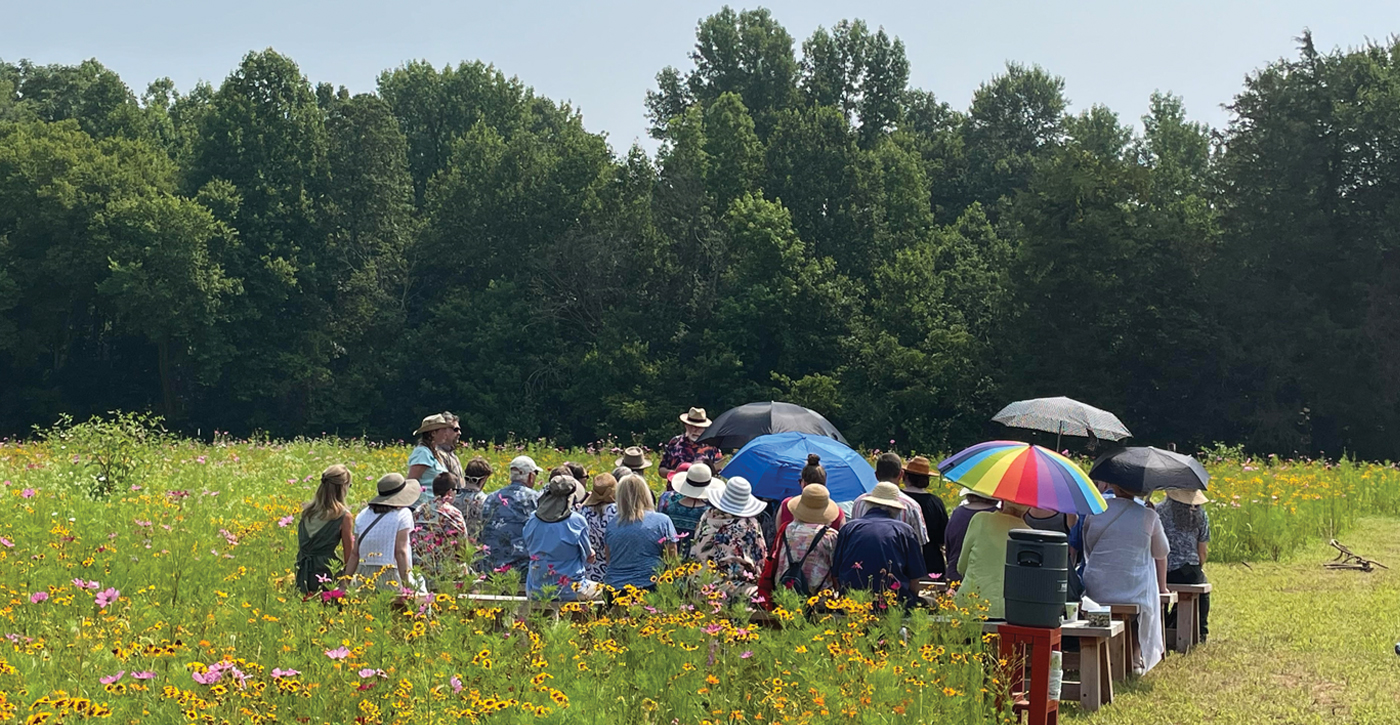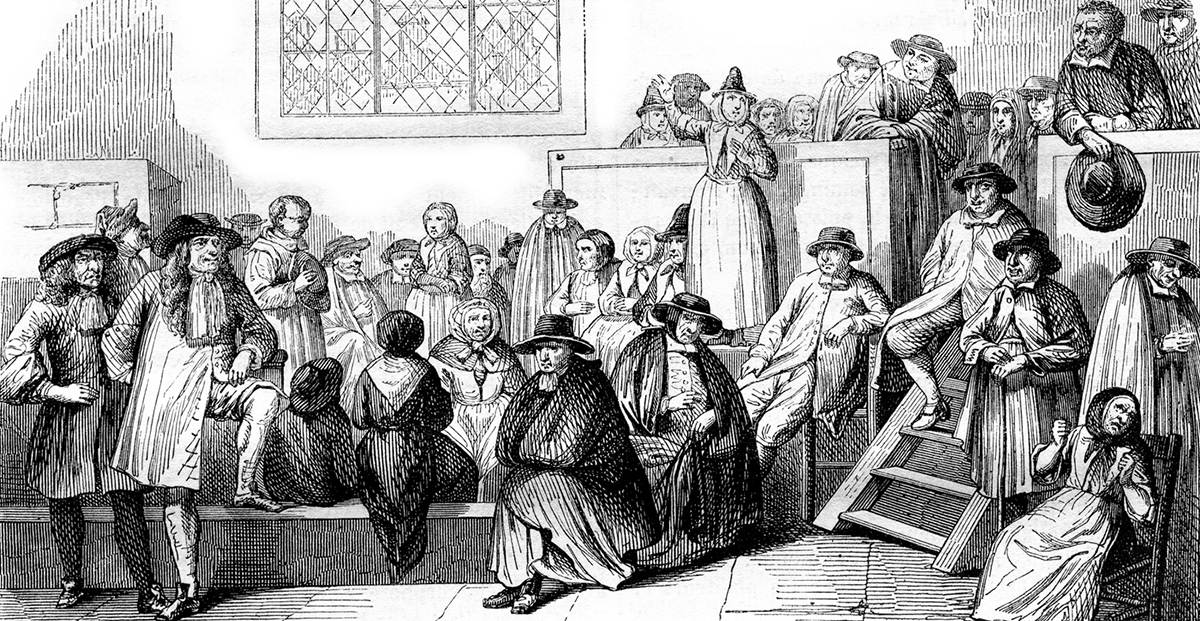We do not own the world, and its riches are not ours to dispose of at will. Show a loving consideration for all creatures, and seek to maintain the beauty and variety of the world.
Work to ensure that our increasing power over nature is used responsibly, with reverence for life. Rejoice in the splendour of God’s continuing creation.
—"Advices and Queries," Britain Yearly Meeting
At age 60, when my husband, Phil, retired, we sold our house and began a new venture—to build an environmentally friendly home. This is how it came about.
Since childhood I have been in love with the natural world. I have felt God’s presence most keenly in the wild New Zealand outdoors and have spent much leisure time hiking. I have felt the awe of Creation, and the interrelatedness of rocks, trees, water, animals, humans, and all life.
When the government proposed to raise the water level of a South Island lake and drown a large area of forest for hydroelectric generation, I jumped into the protest movement. Surprisingly, the campaign was successful. My next foray was to help stop the logging of a native forest, which was to be replaced by a plantation of exotic trees. Again this was a success. After this came the campaign to declare New Zealand nuclear-free.
When I was about 40 years old and the mother of several children, I read The Limits to Growth from Massachusetts Institute of Technology. It was a revelation; the scales fell from my eyes. The authors predicted that within 20 years several of the Earth’s natural systems would have overshot their ability to support life. I learned of exponential growth and the harm that it is producing to the environment.
This caused me to ponder what one person can do to make a difference. Apart from participating in different campaigns to save this or that, what about my personal life? The idea of treading less heavily on the Earth slowly took shape for me. I became an organic gardener, growing fruit and vegetables for my family. I began using nontoxic chemicals around the home.
The next step was to alter our home environment radically. The idea of building an energy self-sufficient eco-house took shape. It felt like a really important leading for me. There were few models in New Zealand at the time. I spent 10 years researching how to fulfill this dream, reading about and looking at homes in which people had done a part of what we intended.
When Phil retired in 1995, we had already resolved to move from Tauranga, where we had lived for 25 years. We settled on the Kapiti Coast, 50 kilometers north of Wellington. We bought a piece of semi-rural land with a hilltop site suitable for wind and solar power generation. We engaged an architect who was sympathetic to our mission but had not built an eco-house before. Nor had our builder, but he, too, was sympathetic. For us, never having built before, it was a pioneering venture.
After engaging both the architect and builder, the next step was to consult a supplier of alternative energy systems. He asked us to write down all the appliances we use, and the hours of use per week of each. He calculated approximately how much electricity we would require, and how much generating capacity we would need, taking into account the amount of wind and sunshine that our site would get. In the course of building we installed a 1kw wind generator, made in New Zealand, and 8 photovoltaic panels of 80 watts each. We subsequently increased this to 16 panels. The builders used mains power. We had the cable disconnected once our energy system was in place— cutting the umbilical cord.
The house is situated on a hilltop, so that it gets all available sun. It is built on a concete slab, with polystyrene insulation beneath. The exterior is of macrocarpa, a renewable and untreated timber, with stone walls up to window height. The walls and ceiling are fully insulated with sheep’s wool. Inside there is a stone wall partly surrounding the wood burner, and tile flooring in the living area. The windows are double glazed—unusual in New Zealand. The large main windows face north. These features are for maximum heat retention. The eaves are designed to cut out sun in summer and let it in during the winter. The result is a warm home of fairly equable temperature. When extra heating is needed on winter mornings we use a portable gas heater in the bedroom.
Our hot water is also primarily supplied by the sun, through a solar collector on the roof, backed up by the wood burner. We cook on natural gas brought in large cylinders once or twice a year. The photovoltaic panels are also on the roof.
The electricity is stored in three sealed 24-volt DC batteries. A 2-kilowatt inverter changes it to AC for use in lighting and all the usual home appliances, such as refrigerator, freezer, computer, etc. We do not run electric heaters, electric blankets, or a dish washer. During the summer, electricity is plentiful. In winter, with its shorter hours of daylight, the supply is leaner, and we need to take care. Electric kettle, toaster, and breadmaker are put away. In all seasons we have learned to switch off lights and appliances not in use. When the weather is calm and cloudy we generate almost no electricity. How long can we survive on stored power? In theory about 10 days, but we are reluctant to put this to the test, as we do not want to run down the batteries too far. A meter tells us approximately how much charge is in them. When storage begins to fall, we batten down, turning off the inverter and using ice packs in the refrigerator over-night. This happens about a dozen times a year.
Soon after we began building, we took a trip to visit the national parks in the western United States. The tour included a stop in Las Vegas. What a shock to see the city lit up day and night, wasting huge amounts of electricity. It caused us to wonder about the significance of our puny contribution.
Our other environmental commitment is to restore our eight-acre property back to something like its pristine state. The challenge was to convert weedy pasture into forest and wetland. We dug a large pond that filled naturally with water, and we set about planting native trees, shrubs, and ferns. The trees are well over our heads now. We also breed North Island wekas, an endangered, flightless native bird, in a predator-proof fenced enclosure.
We discovered that an adjacent ten-acre block of land on which horses were grazing belonged to the local city council. With a small group of helpers, and financial assistance from the council, we are re-planting native trees in this land, too.
After living here for almost a decade, it is time to evaluate the project. The negative side is that supplying one’s own electricity is expensive and requires running a small power station, careful use, and maintenance. We also ask ourselves: How much energy does it take to create a wind generator, batteries, etc? Rural living and no bus service means that we use the car for every outing.
On the positive side, it is delightful to live in a paradise we have helped to establish, surrounded by birds and greenery. About 50 wekas have been released, so now the species is less endangered. We are more aware of the weather and the seasons, and of sunrise and sunset, dependent as we are on sun and wind. The house is warm and comfortable in all seasons. This lifestyle is less profligate and more conserving of natural resources. Although it requires extra trouble, it has the bonus of a greater awareness of, and closeness to, the natural world. Our property is frequently viewed as an example to inspire other home builders and budding architects. Our project has been widely documented in New Zealand, so ripples are spreading.
Where to go from here? There are some encouraging signs of increased awareness for preservation of the environment, which is home and nourishment to the human species. Globally, environmental destruction continues apace. Much of it is fueled by global free trade. This is the area where I now feel the need to put my energy. I also need to constantly reexamine the query: How is my lifestyle affecting planet Earth?



